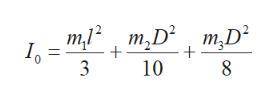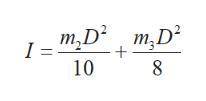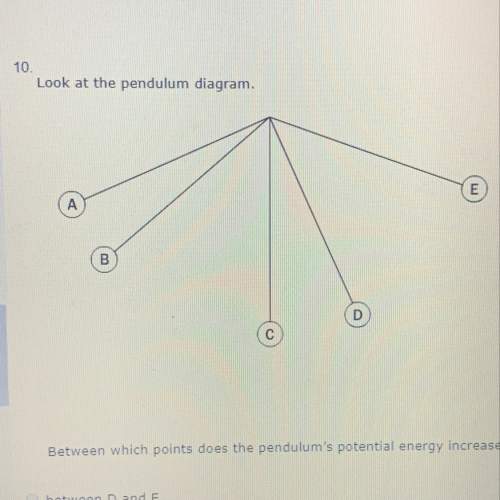
Physics, 20.07.2020 14:01 oreoassassin38
On average, both arms and hands together account for 13% of a person's mass, while the head is 7.0% and the trunk and legs account for 80%. We can model a spinning skater with her arms outstretched as a vertical cylinder (head, trunk, and legs) with two solid uniform rods (arms and hands) extended horizontally. Suppose a 70.0 kg skater is 1.60 m tall, has arms that are each 66.0 cm long (including the hands), and a trunk that can be modeled as being 33.0 cm in diameter. If the skater is initially spinning at 68.0 rpm with her arms outstretched, what will her angular velocity 2 be (in rpm ) after she pulls in her arms and they are at her sides parallel to her trunk? Assume that friction between the skater and the ice is negligble.

Answers: 1


Another question on Physics

Physics, 21.06.2019 18:20
An input force of 7 n is applied to a machine with a mechanical advantage of 1.75. what is the maximum the machine could lift? 12.25 n7n7.25 n26.2 n
Answers: 1

Physics, 22.06.2019 01:30
Which example has gravitational potential energy? a.a horse slowing down from a run b.an apple about to fall from a tree branch c.a bicycle being pedaled down a horizontal path d.beaker sitting on the floor
Answers: 1

Physics, 22.06.2019 02:30
Acar moves at 12m/s and coasts up a hill with a uniform acceleration of -1.6m/s2. how far has it traveled after 6.0s?
Answers: 1

Physics, 22.06.2019 11:50
Amoving electron has kinetic energy k1. after a net amount of work w has been done on it, the electron is moving one-quarter as fast in the opposite direction. (a) find w in terms of k1. (b) does your answer depend on the final direction of the electron's motion?
Answers: 2
You know the right answer?
On average, both arms and hands together account for 13% of a person's mass, while the head is 7.0%...
Questions



Mathematics, 15.04.2020 17:33


Mathematics, 15.04.2020 17:33


Biology, 15.04.2020 17:33



Biology, 15.04.2020 17:33

Computers and Technology, 15.04.2020 17:33


Mathematics, 15.04.2020 17:33






English, 15.04.2020 17:33

Biology, 15.04.2020 17:33

 ) = 70 kg, }
) = 70 kg, } ) = 1.60 m, }
) = 1.60 m, } ) = 33 cm = 0.33 m, }
) = 33 cm = 0.33 m, } ) = 66 cm = 0.66 m, }
) = 66 cm = 0.66 m, } ) = 13%( 70 ) = 9.1 kg, }
) = 13%( 70 ) = 9.1 kg, } ) = 7%( 70 ) = 4.9 kg, }
) = 7%( 70 ) = 4.9 kg, } ) = 80%( 70 ) = 56, }
) = 80%( 70 ) = 56, }






